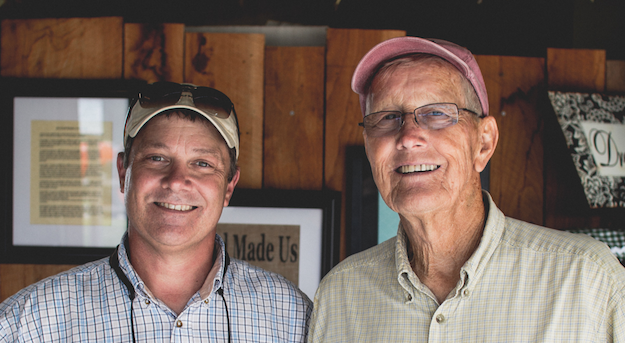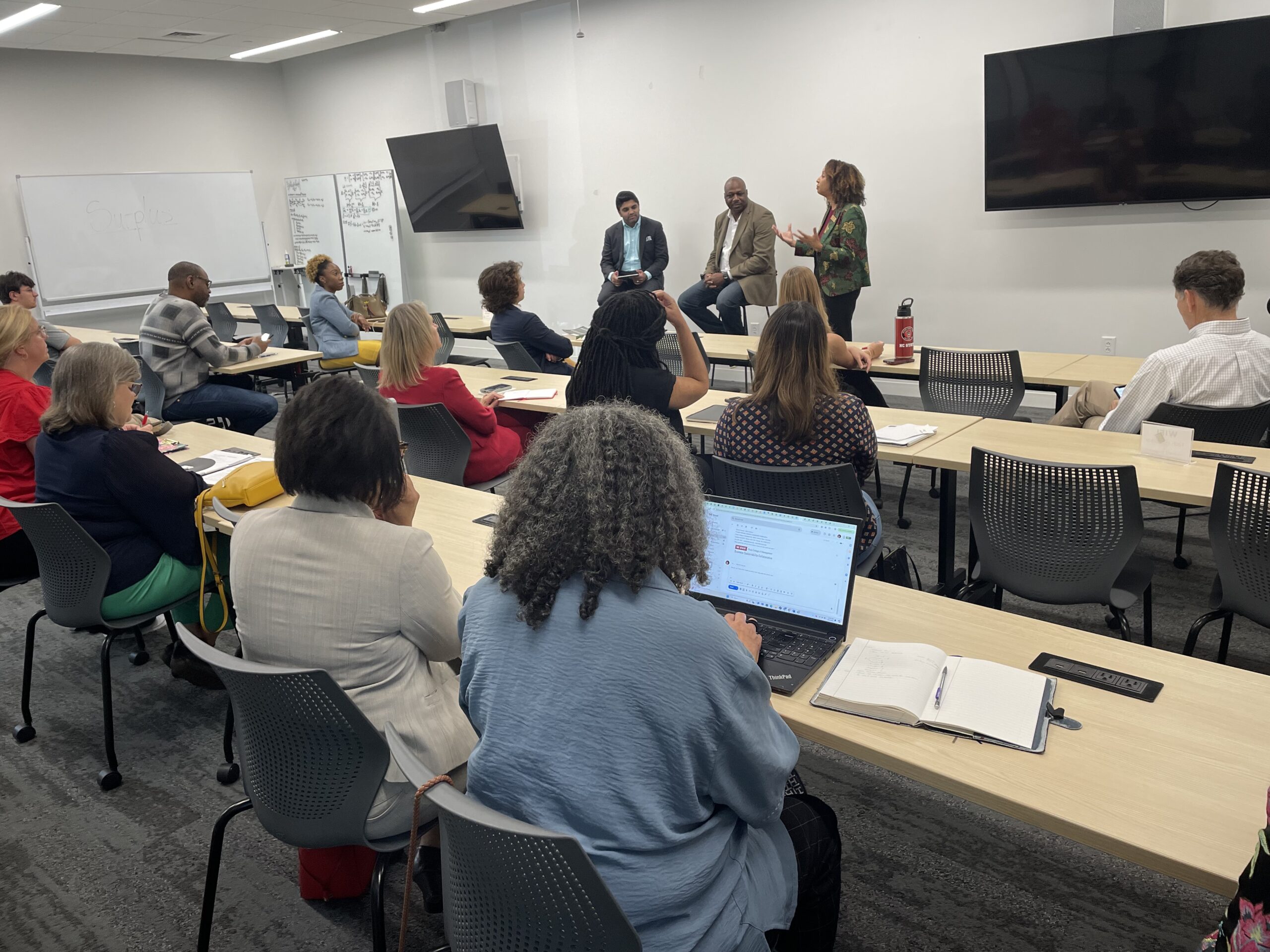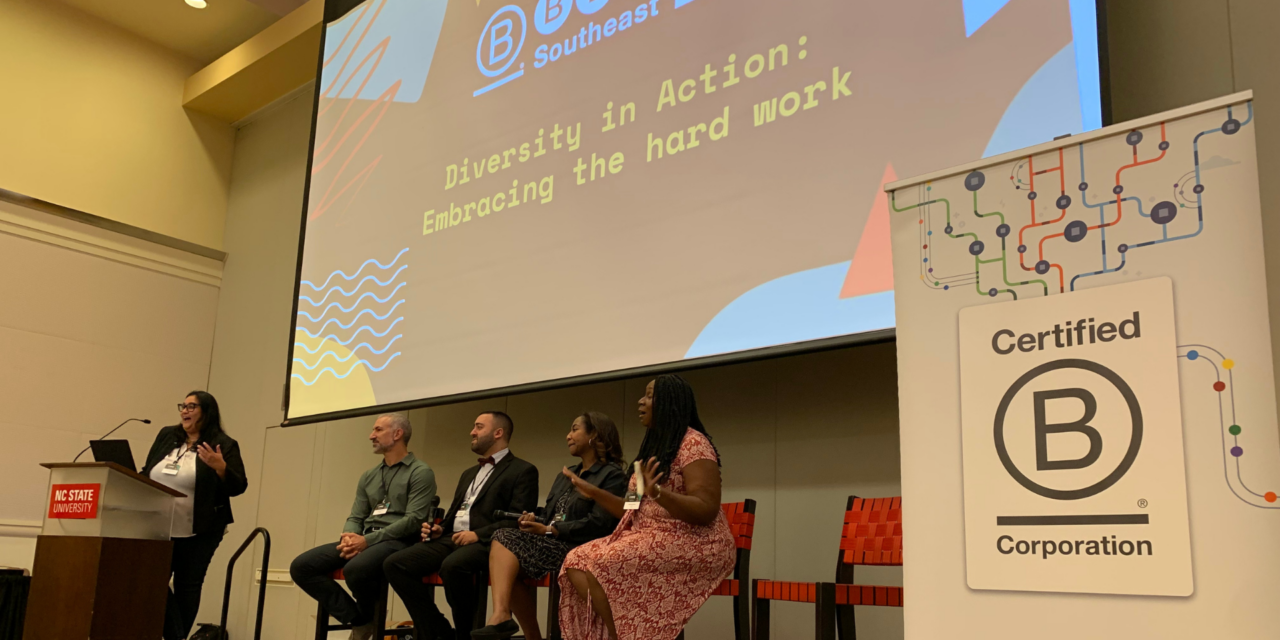REMEMBERING JOHN VOLLMER: A CHAMPION FOR THE SOIL

Photo: Brandon Yow/Whole Foods
One of North Carolina’s great farmers returned to the soil last week after John Vollmer died of cancer. Farmer John and his late-wife Betty navigated a difficult time in North Carolina’s agricultural history, and played a major role in figuring out a post-tobacco future for North Carolina’s family farmers. He was the third generation to earn his livelihood cultivating his family’s property in Bunn, NC, and thanks to John and Betty’s hard-work and ingenuity, the Vollmer Farm will stay in the family, with their son Russ taking over leadership.
Living Through Turbulent Times
After growing up on his family’s tobacco farm, John studied chemical weed control at North Carolina State University. Upon graduation, he found a job selling agricultural chemicals, which required long hours and regular travel. Although he excelled in the corporate environment, he was homesick and unable to spend much time with his wife and young children. John and Betty decided it would be best for the family to return to Bunn.
The Vollmers started an independent farm supply store and John served as president of the NC Tobacco Growers Association in the 1980’s. John and Betty were good friends with most of the family farmers nearby, and as a result, they were all too aware of the difficulties that small family farms were facing at that time.
For over a century, tobacco had been the major income producer for North Carolina growers. John was one of the first farmers to understand that the tobacco era was coming to an end. He saw the ways that increasing federal and state regulation, as well as intense global competition would make tobacco farming less viable in North Carolina. He recognized that family farms would need to get creative if they wanted to make it into the new millennium.
“It’s not that they were responding to changes that they had to make,” explains Scott Marlow executive director of the Rural Advancement Foundation International (RAFI). “They were looking at where the future was headed and they made the changes they wanted to make in order to farm and connect with consumers in ways they felt good about, and in ways that connected with their values.”
John and Betty turned part of their acreage into a sort of laboratory where they deviated from the usual play book and experimented with alternative crops and marketing techniques. They began growing pumpkins, and, for the first time, invited families and school groups to come out and pick their pumpkins right off of the vine. The Vollmers saw the value of getting people onto the farm, connecting with where their food comes from. They started growing a variety of vegetables, and offered one of North Carolina’s first CSA’s. Long before there was a “local food movement,” the Vollmers saw the potential for farmers to earn their livelihood selling directly to their local community.
Going Organic
In the early 1990’s, the Vollmers were searching for crops that could replace tobacco, and strawberries seemed particularly promising. By the end of the decade, strawberries were the new economic mainstay of their farm.
However, strawberries came with their own regulatory challenges. Conventional growers tend to use methyl bromide to fumigate the soil prior to putting strawberries in the ground. Studies were linking methyl bromide to ozone depletion, and regulators were trying to phase out its use. This posed a major problem for strawberry producers because there was no other chemical on the market that could fumigate as well. Because no alternative has been found to be as effective, the EPA continues to allow California strawberry growers to use millions of pounds of methyl bromide each year under a critical use exemption.
Anticipating the need to find an alternative, John once again broke with the conventional way of doing things and started experimenting with pro-biotic and sustainable growing practices. In the fall of 1997 he began a three year research project with NCSU to determine how a compost-based production system would compare with the conventional way of growing strawberries.
At this time, the soil on the Vollmer farm was not in great shape. Many decades of tobacco farming had depleted most of the nutrients, and regular use of pesticide had made life impossible for microorganisms, including the beneficial ones. Although researchers at NCSU were beginning to understand the importance of soil biology for pest management, they had little experience putting theory into practice on a large scale. The research project offered a chance to put the value of composting and integrated pest management to the test.
The results were extremely encouraging, with the compost-fed batch of strawberries yielding almost as many pounds of berries as the methyl-bromide treated and fertilizer-fed batch. Although managing the compost pile and weeding the strawberries added additional labour costs, they offered John major savings on fertilizer and pesticide. Every acre of strawberries grown organically makes use of 12 tons of otherwise wasted cow manure, as opposed to 200 pounds of chemicals, a sizable portion of which end up in rivers and oceans. The report is available online, and remains a useful document for anyone trying to grow organically on multiple acres.
Upon completing the research project, John was convinced. He started shifting more of his acreage to organic production, and incorporated compost, crop rotation and integrated pest management techniques to his non-organic crops. Farmers and extension agents from across the state took trips to his farm, and he spoke publicly about the benefits of a probiotic approach to agriculture. In a 1997 issue of The Strawberry Grower he explained that the point of adding compost was “ to create a healthy environment and improve plant health to where the plants naturally resist disease and insects. We’ve really brought the soil to a bad place with conventional farming methods.”
The report remains a valuable resource for anyone trying to grow crops organically on a large scale.
A Taste-Maker Amongst Farmers
A number of voices were advocating switching to organic agricultural practices at the turn of the millennium, but few did more to convince the conventional farming community of the importance of building soil health than John Vollmer’s. His background as a successful conventional grower gave him credibility amongst conventional strawberry growers, whose operations tend to dwarf those of organic growers.
“Almost no organic strawberry producers in the state approached the scale at which [John] did it. He took conventional strawberry production, but went organic with it,” Debby Weschler, previous head of the North Carolina Strawberry Growers Association explains. “He is equally, if not more significant in the conventional farming community as he is in the organic community… He was the kind of guy who got along with everyone.”
Much of what seems like standard practice for family farms in North Carolina today can trace its roots back to experiments on the Vollmer Farm. “John was a tastemaker amongst farmers, in terms of not just organic production and certification, but also direct market connection, the pick your own concept and getting into new crops,” says Sandi Kronick, CEO of Eastern Carolina Organics. Vollmer farm was one of the first examples of agri-tourism in the state, and remains one of the most successful.
The Vollmers were open to any idea that might help improve the economic viability of their farm enough for the fourth generation of Vollmers to want to keep it going. As with all great innovators, sometimes they were too far ahead of their time. Kronick recalls, “they were approached by developers to be a farm inside of a neighborhood. The developers were trying to use it as a competitive amenity… They ended up phasing it out, but it speaks to how they were open to all forms of collaboration and ways to bring the vitality and spirit, as well as the food of the farm to people. They were wide open innovators.”
In recent years, Vollmer Farm has ventured further into organic production, adding blueberries, blackberries and asparagus to their deversified repertoire. John and his son Russ have also worked closely with RAFI to advocate for specialty crop insurance that can protect a diversified organic operation like the Vollmers from losses due to inclement weather.
John was a champion for family farmers everywhere. He did everything in his power to keep the Vollmer farm profitable enough for it to remain in the family for a fourth generation. He managed to beat the odds and succeed in this goal, his son Russ is now keeping the farm going, making the fifth generation of Vollmers working the land.
In the process of saving his own farm, he helped countless other farmers figure out how to make agriculture more economically viable and environmentally responsible. He was always willing to share his struggles and thought processes with others. Everyone who knew him attests to the warmth and incredible generosity that he showed to everyone who arrived at his farm.
Beyond his legacy as a visionary farmer, he’ll be remembered as a supportive neighbor, a loving brother and father and an active member of the catholic church. At an emotional opening of last years Farmers Day of Prayer, he prayed, “Dear Lord… We ask your blessing on all of the farmers across the USA, that their crops will be prosperous and their spirits will be full. We thank you Lord for this day. Amen.”
The kindness and ingenuity that poured from John during his life will remain in the red clay to nourish many future generations of North Carolina farmers.
He will be deeply missed.
- Categories:


